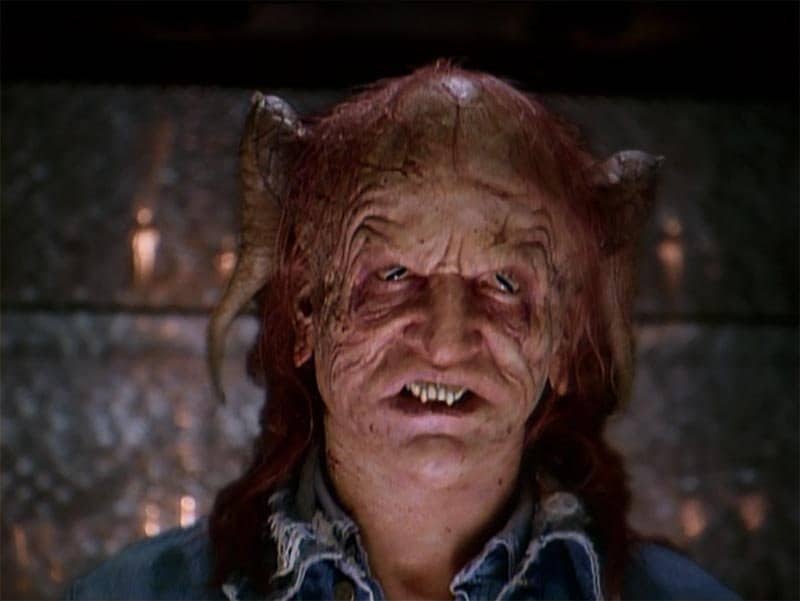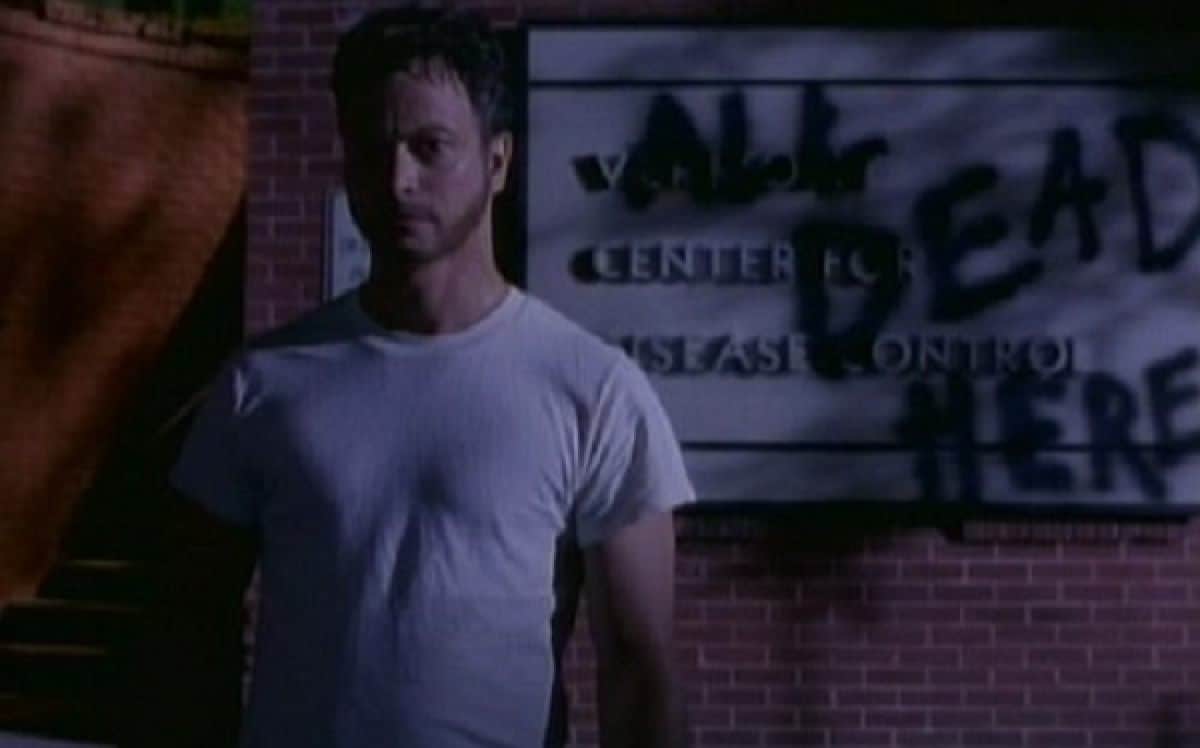Mick Garris’ ambitious but flawed miniseries adaptation lives on thanks to misplaced nostalgia.
Every month, we at The Spool select a filmmaker to explore in greater depth — their themes, their deeper concerns, how their works chart the history of cinema and the filmmaker’s own biography. This month, we ring in the release of It: Chapter Two by exploring the various adaptations of the master of horror, Stephen King. Read the rest of our coverage here.
Any made-for-television miniseries that starts with T.S. Eliot’s dire warning “This is the way the world ends, not with a bang but a whimper,” tells you you’re in for something, and that something might just be a grade-school book report of a miniseries.
Coming in hot off the heels of the 1990 expanded edition of Stephen King’s powerhouse tale of plague, good vs evil, and the empty spaces of America, The Stand would be King’s biggest and most successful collaboration with Mick Garris. To this day it remains one of the most well-remembered adaptations of King’s work, along with its made-for-television counterpart, 1990’s IT. This was a moment in pop culture history, with 19 million families gathering around to watch over four nights as the good guys square off against the forces of darkness.
Now that we’re all older and wiser—with deeper pockets and better technology—it’s easy to see that The Stand’s staying power lies almost exclusively in its nostalgia. People still love this series, not because it’s good, but because they have good memories of watching it. The Stand might be the most perversely comforting of television security blankets, one made entirely of shoddy sets, poor CGI, hamfisted acting, and vests. So many vests!
The Stand might be the most perversely comforting of television security blankets, one made entirely of shoddy sets, poor CGI, hamfisted acting, and vests.
Unlike other post-apocalyptic road trip series (The Walking Dead, for instance) there are no frayed, sweat-stained but ultimately practical pieces. You never see the same article of clothing twice aside from a few pieces that serve as character signatures (Ralph’s hat, Larry’s ubiquitous vest). Almost every single piece of clothing in this series is fresh and new and the absolute worst choice for riding a motorcycle across the country. Fran Goldsmith (Molly Ringwald) bikes across New England in a bizarre tights-and-skirt set, complete with jaunty beret, and has the gall to complain about calluses on her ass. Her hometown counterpart Harold Lauder (Corin Nemec) goes so far in the opposite direction that he breezes past “motorcycle heavy” and lands dead on the square marked “leather daddy.” This could have been fun if Harold wasn’t the worst kind of pre-Reddit incel who makes every second of his screen time horribly uncomfortable for the audience.
Vests, berets, and leather chaps aside, the cast does their best with King’s original script, but if we learned anything from Watchmen, it’s that slavish fidelity to the source material doesn’t always translate into good viewing. Jamey Sheridan—a relative unknown at the time—seems to be the only one actually enjoying his role as devil-in-denim Randall Flagg. Sheridan plays the part with obvious, scenery-chewing glee, cancelling out anything that made Flagg mysterious or even remotely unsettling. He’s just too damned likable to be frightening, leading to a parade of demon faces and glowing eye special effects to remind the viewer that he is, in fact, evil. If a Spirit Halloween Store became sentient, it would be this version of Flagg.

Gary Sinise in his prime, pre-Gump days tackles the stoic, good-hearted Stu Redman with a forthright professionalism that makes one wonder if he wanted the role or if he just wanted to remodel his kitchen. Other bright spots include Miguel Ferrer as Flagg’s reluctant right hand Lloyd Henried and Matt Frewer’s delirious and strangely sympathetic loose cannon, the Trash Can Man. Ed Harris and Kathy Bates shine in uncredited roles as a guilt-ridden General driven to suicide, and a radio host who is martyred for the truth. These smaller scenes are so memorable they overshadow the work of main characters like Adam Storke’s Larry Underwood—who is never quite believable as a troubled rock star—and Rob Lowe, who can’t seem to manage playing a deaf character despite being partially deaf himself.
Not to say that there aren’t other issues at work here. Mother Abagail Freemantle (Ruby Dee), who serves as a rallying point for the forces of good, is reduced to a one-note, bible-thumping magical negro. There’s the aforementioned incel Harold Lauder, a character who in the text turns out to be more layered and tragic, here reduced to a single, clammy note. Trash Can Man’s mental illness and Tom Cullen’s (Bill Fagerbakke) developmental disability are handled with all the care and subtlety of a commercial for Flu Buddy. There’s the fact that, including Mother Abigail, only three women take up major screen time in this story, and they are depicted as a hopeless shrill (Fran) and a craven woman who loses her mind (Laura San Giacomo’s doomed Nadine Cross). Mother Abagail might be the only female character the script depicts with any kindness, and she doesn’t live to see the end of the story. Unless of course you count her giant, floating ghost head in the final shot, which undermines the cautiously hopeful tone of the ending and catapults it once more into the absurd.
A story with so much depending on visuals quickly falls apart when those visuals don’t pass muster…and pass muster these do not. A viewer wants the story to show as well as tell, but when technology and budget fall flat, viewers are left with plot elements that read as unintentional comedy. Maybe it’s unkind to weigh 1994’s visual effects against the current technologies, but it isn’t merely what they are, it’s how they’re used. When Nadine is raped by Flagg, all the terror and horror of that moment is leached dry by Flagg’s melty demon-face transition, spinning the moment irretrievably into the ridiculous. We don’t need to see Flagg as a literal demon to believe him capable of rape, we don’t need to see it to understand Nadine’s trauma—especially with the script telling us many times over that this was a preordained event, an event that both the audience and Nadine knows will drive her mad. And we especially don’t need to see it as something to laugh at in the midst of sexual violence.
In almost every case of adapting a massive book for the screen (large or small) there will be pieces that are dropped on the roadside on the path to Must-See-TV. Had King and Garris held on to a few of these elements for The Stand, it might have given this miniseries more longevity, and set a far more unsettling tone than this scrubbed down and sanitized version does. The most compelling sections of the book are the ‘follow-the-bouncing ball’ sneak peeks of the breakdown of society as Captain Trips turns America into a new wasteland. Perhaps with these glimpses included, we could have gotten some feeling of horror and loss, the senseless tragedy of these corpse-filled places the survivors are forced to breach.
Instead, the miniseries opens in the California facility where Project Blue makes its escape, a place where people died so quickly that they’re frozen in their final moments. It should be creepy, but once again we are given the preposterous: open-eyed bodies lean casually on ping-pong tables, paddles still in hand, frozen while grasping at doorknobs, or posed like supplicants in renaissance art. Had these tableaux—or The Stand itself—managed to imbue more than an ounce of reality, it might have been terrifying.

